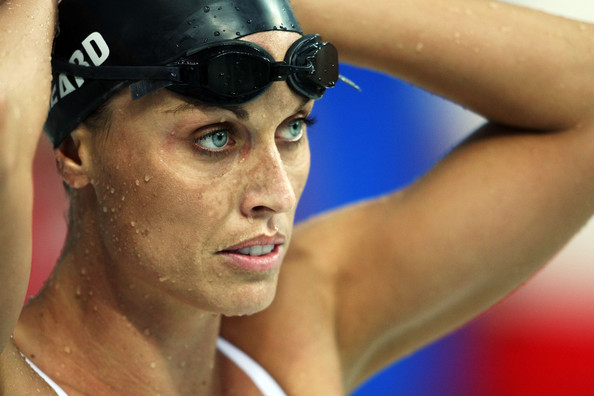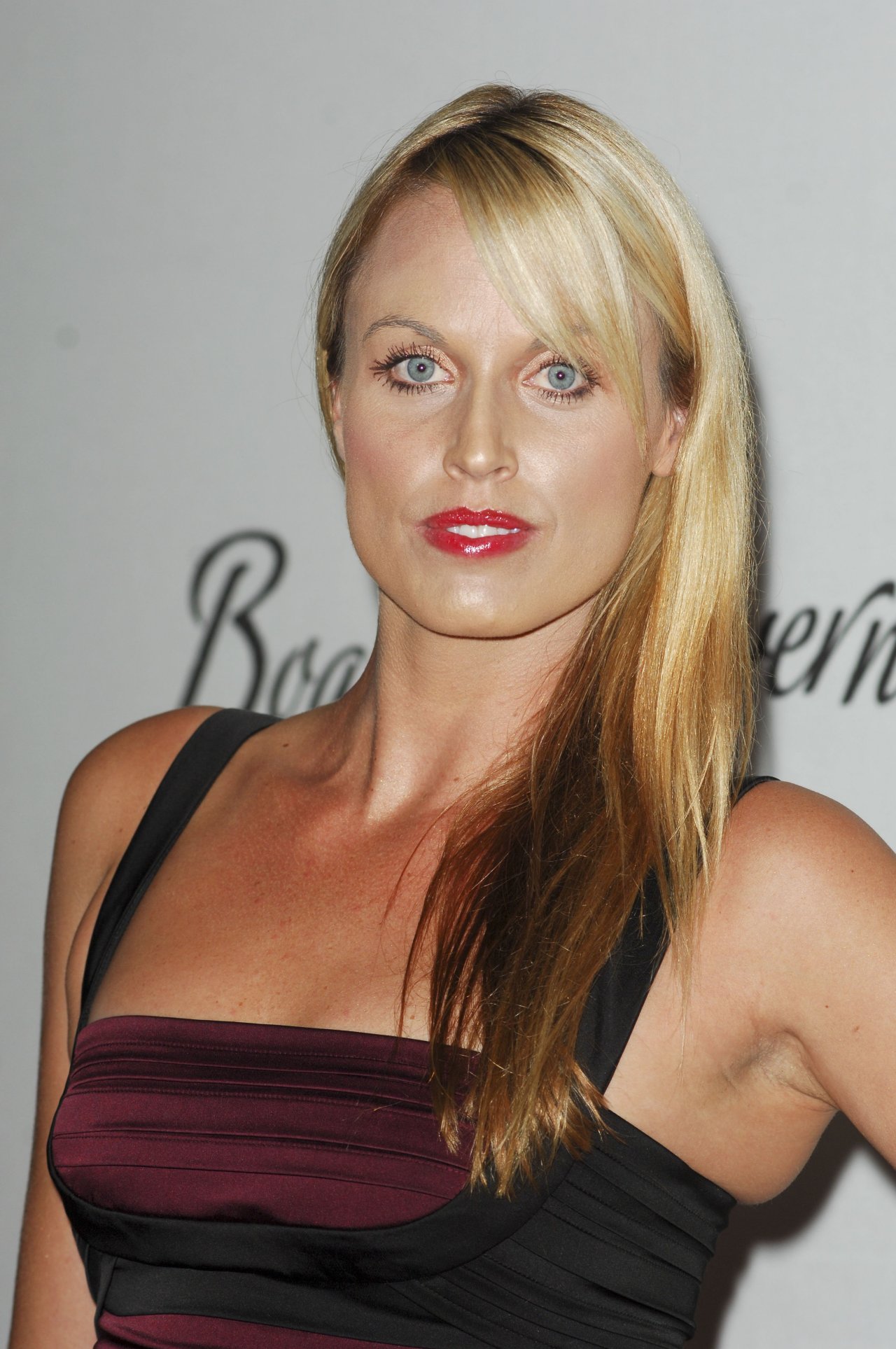Height/Weight: 5-3, 92
Hometown: Irvine, Calif.
Birthdate: Oct. 29, 1981
Club Team: Irvine Novas
Coach: Dave Salo
Most Notable: Qualified for 1996 Olympic team in 100m breast and 200m
breast double bronze medalist at 1995 Pan Pacifics … 4th-fastest woman in
history in 200m breast; 2nd-fastest American … 9th-fastest woman in
history in 100m breast; 2nd-fastest American …. broke two of Tracy
Caulkins’ meet records at a meet in Southern California, never having heard
of Caulkins …. one-time national champion.
1996: Won the 100m breast and 200m breast at Trials to earn spot on Olympic
team …. 1995: Won both breaststrokes at U.S. Open, earning a tie for
Phillips performance award …. earned two bronze medals (100m breast and
200m breast) and a silver (400m medley relay) at Pan Pacifics …. won the
100m breast and finished second in the 200m breast in the Summer Nationals
…. won the 100m breast and 200m breast at the U.S. Olympic Festival ….
named rookie of the meet at the Spring Nationals.
Personal: One of two 14-year-olds on the team and was the first 14-year-old
to qualify since 1976 … has two cats, one dog, two rabbits and four birds
…. also enjoys interior decorating …. gives $1 of her weekly $6
allowance to an animal shelter … sisters Leah and Taryn are both swimmers
…. carried a teddy bear dressed in an Irvine Novas jacket with her at ‘96
Trials.
Excerpts from “Sports Illustrated Olympic Preview” by Leigh Montville
Her success has arrived almost without effort – or at least without inordinate effort. She isn’t some high-intensity phenom, discovered at age two and shipped by overbearing parents to a faraway state to train under a guru in flip-flops. Her success has been a surprise, almost as if she were in one of those Disney movies in which a kid suddenly materializes to lead a stumbling team to the World Series.
Her father, Dan, is a hotel and restaurant management professor at Orange Coast College, and that’s how Amanda ended up as a guest in his friend Herb Livsey’s class. Her mother, Gayle, is an art teacher at an alternative high school in Irvine. The parents are divorced after 23 years of marriage, but they live within blocks of each other, share custody and are friendly. Their two older daughters, Leah, 21, and Taryn, 19, also swam when growing up, as part of an age-group program. Neither swims now.
“There wasn’t exactly a swimming gene pool here,” says Dan. “We weren’t setting out to make champions. We just liked the benefits of the sport, the competition, the fact that it makes kids schedule their time, the friendships that it brings. Nothing really was predestined, although I will say that when Amanda was five years old, she did say she was going to swim in the Olympics. We all just smiled.”
Until about 2-1/2 years ago, Amanda was on the same ordinary course her sisters had followed. Swimming was just another activity. She played soccer. She raised an assortment of pets. In January 1994 – when she joined the Novaquatics club full time after swimming recreationally through grammar school – she was a butterfly specialist. She hated the breaststroke.
As part of the Novaquatics’ program, she was tested in all the strokes. When she butchered the breaststroke kick, assistant coach Brian Pajer, a breaststroke finalist at the 1992 U.S. Olympic trials, flinched. He hated to see someone treat his favorite stroke so badly. He worked on teaching Amanda the right technique. She learned. The result was a graph of improved performance that would make any money-market manager proud. Amanda had stumbled onto the perfect event.
The breaststroke somehow seems built for adolescent girls. Or vice versa. The U.S. record for the 100 and the 200 were set by Anita Nall in 1992, the summer she turned 16. At the Barcelona Olympics that year, Nall finished second in the 100 to 19-year-old Yelena Rudkovskaya of the Unified Team and third in the 200 behind winner Kyoko Iwasaki of Japan. Iwasaki was a surprise. Then again, she had just celebrated her 14th birthday.
“There are a lot of things that probably have worked together for Amanda,” Dan says. “Her physiology is blessed for this event. She is slender, but her legs are powerful for the kick. Her ankles are very loose. The coaches all talk about that. She is mentally tough. She works very hard. She wants to improve. Plus, she is blessed by being in this program at Novaquatics, where they don’t burn her up or burn her out. She’d get burned up in some high-powered program.”
While Amanda was still in the recreational program, Novaquatics coach Dave Salo had talked with Dan and Gayle about their daughter’s potential. Amanda and her parents decided she would join the full-time program – though Amanda cried at the idea of leaving soccer – to concentrate on swimming. During the school year she now had swim workouts five afternoons and three early mornings a week. “There were a number of people who were talking to us, saying we had to make the commitment,” Dan says. “We would have been remiss, I think, if we hadn’t followed up.”
Salo, a former USC assistant, is a low-pressure coach in a high-pressure sport. He is a proponent of high-speed, race-quality training rather than high-mileage training. He is not a believer in heavy weight training, especially for teenage girls. “I tell all the kids in our program that they’re training for the Olympic trials,” Salo says. “That is the goal. Maybe none of them will make it, maybe one or two or three, but that is the goal.”
Beard followed Salo’s instructions, hitting whatever standards he suggested. From a time of 1:33 in the 100 in January 1994, when she started serious training, she dropped to 1:15 by that August. By last summer, she had shaved off another five seconds. This March she swam her 1:08.36 to win the Olympic trials in Indianapolis in a breeze. She clutched a teddy bear at the press conference afterward.
How fast was Beard’s progress? She skipped the whole junior nationals scene, going straight to the senior nationals. How fast? A year and a half after starting to learn the correct way to do the breaststroke, she was swimming the 100 and the 200 at the Pan Pacific championships in Atlanta for the national team and finishing third in both. How fast? She broke two of Olympic champion Tracy Caulkins’s meet records at an event in Southern California last year and then said she had never heard of Tracy Caulkins.
“It’s all great, but it’s scary, too,” Gayle says. “You have to put your trust in a lot of people, some of whom you really don’t know very well. Ninth grade, in itself, is a tough time for a kid, going to high school for the first time. She’s struggled sometimes with the workload. Ninth grade is a time when you really don’t want to be singled out, to be different.
“I worry a lot. I worry about jealousy, somebody saying something mean and hurting Amanda’s feelings. I worry about people saying something about her physically that she hears. You’re so insecure. Suppose she has a zit or something, and people are talking about that? All of this is exciting, but some days I just want to cover her up in her bed and protect her.”
Her events in Atlanta will be on the second and fourth days of the Games. Her big competition will come from Heyns, Samantha Riley of Australia and any number of surprise candidates from China, Japan and/or Eastern Europe. The races should be two of the best in the Olympics. “We’re treating this as going to a big party,” says Salo in his low-impact way. “There just happens to be a swim meet in the first few days.”
Food? She likes snacks. She likes candy. She likes chicken McNuggets and English muffins with cinnamon sprinkled on top. Sleep? She is usually in bed by nine o’clock. She needs 10 hours of sleep or she feels cranky. School? She has had trouble with algebra. She doesn’t get it. Friends? Most of her friends swim, but she has other friends who don’t. Pressure? She hasn’t felt it. Improvement? She needs work on her turns. A lot of work. High school competition? In fact, at the time of the class visit she still hadn’t swum for the high school team; the season hadn’t begun. But she didn’t plan to give anyone a head start.
She was normal. Maddeningly normal. Salo pointed out that there is less pressure on a 14-year-old than there would be on a swimmer of 24 or 25 who was trying to finish her career with the performance of a lifetime. Amanda will go from the Olympics to three more years of high school and four years of college. She could end up back at the Olympics, maybe more than once.
Amanda Beard
Amanda Beard
Amanda Beard
Amanda Beard
Amanda Beard
Amanda Beard
Red Bull Amanda Beard Part 1 - Daily life
Red Bull Amanda Beard Part 2 - Training










